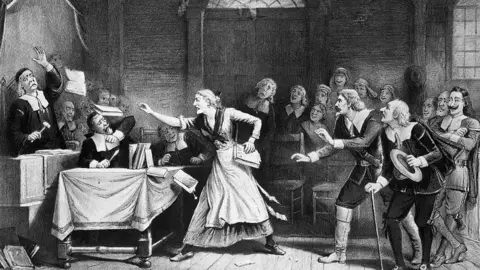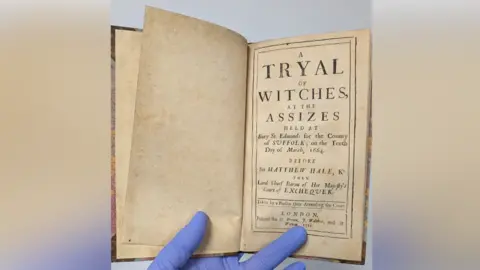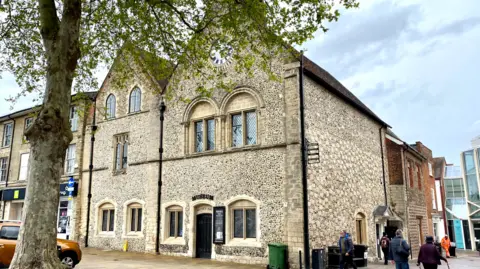Helen Burchell
 Getty Images
Getty ImagesLinks between the infamous Suffolk witch trials in the 17th Century and those in Salem, in the US, are being explored in a new partnership between the two countries.
The trial of Amy Denny and Rose Cullender, from Lowestoft, held in Bury St Edmunds in 1662 set a precedent that was believed to have influenced the Salem witch trials in Massachusetts at the end of that century.
Both women were accused of bewitching local children, found guilty and later executed.
A partnership between Moyse’s Hall Museum in Bury St Edmunds and the Salem Witch Museum in the US aims to further explore the connections.
The Salem trials saw 20 witches convicted, while some 150 more men and women were accused between 1692 and 1693 in the community, which is north of Boston.
The Suffolk museum said forging links with the museum in Salem was “part of a project to explore the shared history of the infamous witch trials and encourage US visitors to the town”.
Information on these connections will go on display at both museums this winter and a series of lecture swaps are also planned “creating a mutual exchange of knowledge and culture”.
 Moyse’s Hall Museum
Moyse’s Hall MuseumDan Clarke, heritage officer at Moyse’s Hall Museum, said: “Bury St Edmunds, within a witch trial context, is one of the most infamous places in Europe.
“To share our history in friendship and academic endeavour with the most notable place on earth for this study is very humbling.
“It’s a fascinating next step in our pursuit to best tell the human story of the victims in a wider context.”
Bury St Edmunds hosted the largest witch trial in English history.
Ian Shipp, cabinet member for leisure at West Suffolk Council, which runs the museum, said: “The witch trials is a disturbing part of our history that sadly carried over and influenced the United States.
“We already see many visitors from America to Moyse’s Hall which, as a history museum, reflects the good and bad from our past in order that we may learn from it.
“This link with Salem is the natural step for both museums and we look forward to exploring this further through our exhibits.”
 Sue Warren
Sue WarrenRachel Christ-Doane, Salem Witch Museum’s director of education, said: “We are excited about this collaborative opportunity, particularly because the roots of the Salem witch trials lie in England.
“We meet visitors from the UK regularly, many of whom have family connections to our local trials. We anticipate a fruitful exchange of information with Bury St Edmunds as we compare the similarities and differences between these famous witchcraft panics.”
Next year, Moyse’s Hall Museum will open an exhibition about the witch trials in the county and throughout East Anglia which will include artefacts it said had never been seen on public display before.
Disclaimer : This story is auto aggregated by a computer programme and has not been created or edited by DOWNTHENEWS. Publisher: BBC






